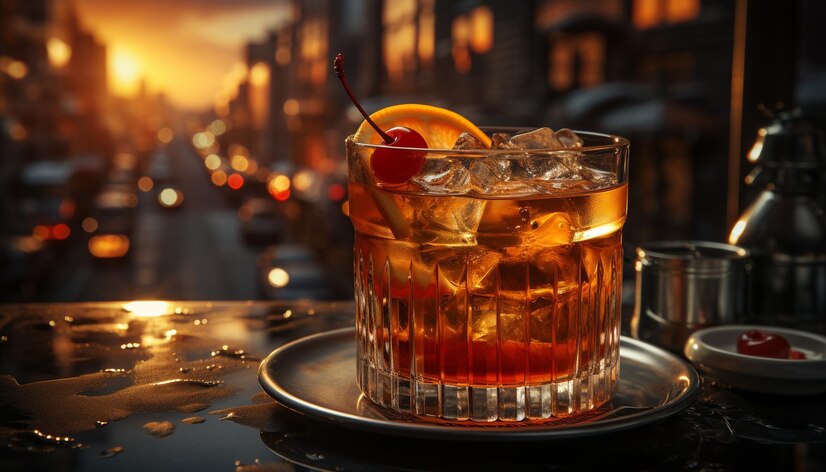Introduction to Bourbon
Bourbon, often referred to as “America’s native spirit,” has a rich history and a distinctive flavor profile that sets it apart from other types of whiskey. Whether you’re a seasoned bourbon enthusiast or a curious newcomer, there’s always something new to learn and appreciate about this iconic beverage.
What Makes Bourbon Unique?
Definition and Legal Requirements
Bourbon is a type of American whiskey that must meet specific criteria to earn its name. According to U.S. law, it must be made from at least 51% corn, aged in new charred oak barrels, and distilled to no more than 160 proof (80% alcohol by volume). Additionally, it must be entered into the barrel for aging at no more than 125 proof (62.5% alcohol by volume) and bottled at a minimum of 80 proof (40% alcohol by volume).
The Corn Factor
Corn is the primary grain used in bourbon production, which gives it a sweeter flavor compared to other whiskeys. The high corn content is one of the defining characteristics of bourbo’n, distinguishing it from other types of whiskey that may use more barley or rye.
The History of Bourbon
Origins and Evolution
Bourbon’s roots trace back to the late 18th century in Kentucky, where settlers began distilling whiskey using corn. The name “bourbon” is believed to have originated from bourbo’n County, Kentucky, though the exact origin is still debated. Over the years, bourbo’n has evolved from a regional favorite to a globally recognized and cherished spirit.
Prohibition and Revival
The Prohibition era (1920-1933) dealt a significant blow to the bourbon industry, as the production and sale of alcohol were banned in the United States. However, a few distilleries were allowed to produce “medicinal whiskey,” keeping the industry alive. Post-Prohibition, bourbo’n saw a resurgence, with many distilleries reopening and new ones emerging.
How Bourbon is Made
The Mash Bill
The mash bill is the recipe of grains used in bourbon production. While it must contain at least 51% corn, the remaining grains can include barley, rye, and wheat. The specific combination of grains affects the flavor profile of the final product.
cooking and Fermentation
Once the grains are selected and ground, they are cooked to release their fermentable sugars. The cooked mash is then cooled and transferred to fermentation tanks, where yeast is added to convert the sugars into alcohol. This process typically takes three to four days.
distillation
The fermented mash, now called “wash,” is distilled to separate the alcohol from the solids and water. Most bourbons are distilled twice, typically using a column still followed by a pot still. This double distillation helps to refine the flavor and increase the alcohol content.
aging
After distillation, the clear, unaged whiskey is transferred to new charred oak barrels for aging. The aging process is crucial, as it allows the whiskey to develop its complex flavors and rich color. By law, bourbo’n must be aged for a minimum of two years, though many are aged for much longer.
The Flavor Profile of Bourbon
Tasting Notes
Bourbo’n is known for its sweet, rich flavor, with notes of caramel, vanilla, and oak. Depending on the mash bill and aging process, you might also detect hints of spice, fruit, and even chocolate or tobacco.
factors Influencing Flavor
Several factors influence the flavor of bourbon, including the grains used in the mash bill, the yeast strain, the distillation process, the barrel aging, and the environment in which it is aged. Each distillery has its unique approach, resulting in a wide variety of flavors and styles.
Popular Bourbon Brands
Iconic Names in Bourbon
Several brands have become synonymous with high-quality bourbo’n. Some of the most well-known include:
- Jim Beam: One of the largest and most recognizable bourbo’n brands in the world, known for its classic, approachable flavor.
- Maker’s Mark: Distinctive for its red wax-sealed bottles and wheated mash bill, offering a smoother, sweeter taste.
- Buffalo Trace: A historic distillery producing a range of highly regarded bourbons, including Eagle Rare and Pappy Van Winkle.
Craft Distilleries
In addition to the major players, there are numerous craft distilleries producing exceptional bourbons with unique flavor profiles. These smaller operations often experiment with different grains, aging techniques, and barrel finishes to create distinctive products.
How to Enjoy Bourbon
Neat, On the Rocks, or Cocktails
There are many ways to enjoy bourbon, depending on your personal preference. Some purists prefer to drink it neat (without any additives), while others enjoy it on the rocks (over ice) to mellow the flavors. Bourbon also shines in a variety of cocktails, from classic Old Fashioneds to modern creations.
Pairing with Food
Bourbon’s rich, complex flavors make it an excellent companion to food. It pairs particularly well with smoked or grilled meats, rich desserts, and even certain cheeses. Experimenting with different pairings can enhance your appreciation of both the bourbon and the food.
The Bourbon Culture
Bourbon Festivals and Events
Bourbon enthusiasts have plenty of opportunities to celebrate their favorite spirit at various festivals and events. The Kentucky bourbo’n Festival, held annually in Bardstown, Kentucky, is one of the most famous, offering tastings, distillery tours, and more.
Bourbon Tourism
Bourbon tourism has become increasingly popular, with visitors flocking to Kentucky’s Bourbon Trail. This collection of distilleries offers tours, tastings, and a behind-the-scenes look at bourbo’n production. It’s a must-visit for any bourbo’n lover.
Conclusion
Bourbon is more than just a drink; it’s a cultural icon with a rich history and a bright future. Whether you’re savoring a well-aged bourbo’n neat or mixing up a cocktail, there’s no denying the unique appeal of this beloved American spirit.
FAQs
What is the difference between bourbon and whiskey?
Bourbon is a type of whiskey, but not all whiskeys are bourbo’n . The key difference lies in the ingredients and production process. Bourbo’n must be made from at least 51% corn and aged in new charred oak barrels, among other requirements.
How should I store bourbon?
Bourbon should be stored upright in a cool, dark place. Unlike wine, it doesn’t improve with age once bottled, so there’s no need to store it for long periods.
Can bourbo’n go bad?
While bourbo’n doesn’t spoil like food, its flavor can degrade over time, especially if the bottle is opened and not properly sealed. It’s best enjoyed within a few years of opening.
What is a “wheated” bourbon?
A wheated bourbo’n replaces the rye in the mash bill with wheat, resulting in a smoother, sweeter flavor. Maker’s Mark is a well-known example of a wheated bourbo’n .
How is bourbon different from Scotch?
Bourbon is made primarily from corn and aged in new charred oak barrels, while Scotch is typically made from malted barley and aged in used barrels. The production processes and regional differences also contribute to their distinct flavors.







